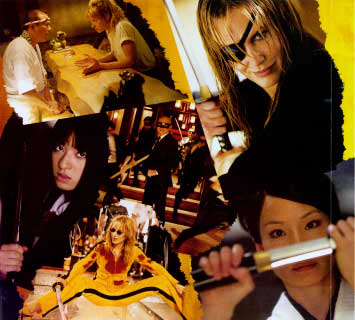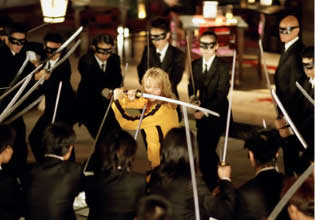

Such tension between the virtual programming of conduct and a search for the elusive grounding of personal identity is a recurrent theme in Japanese cinema. It undercuts the driven, cold rage of Meiko Kaji’s “Yuki” and partially resolves the puzzlement of Yumiko Shaku’s “Yuki” as her body habitually “just moves.” At a broader level this echoes the perpetual tension between tatemae (outer behavior) and honne (seldom expressed inner feelings) that finds repeated reference in Sion Sono’s “Suicide Circle” (2002) with the refrain that people have “lost the connection to themselves.“

By contrast, Western action films that invoke the style of Japanese cinema, such as the Wachowskis’ “The Matrix” (1999) and “Kill Bill” leave the identities of their heroes curiously off-limits to introspection. Both Keanu Reeves’ “Neo” and Uma Thurman’s “The Bride” seemingly manage the transition from ordinary mortal to “superhero” with relative ease. Their personal reality is firmly grounded, even if all around them is artifice. Indeed, the insubstantial nature of their surroundings empowers these protagonists. The profound existential – not moral – questions consistently posed in comparable Japanese films seem entirely absent.

As “Motoko Kusanagi” contemplates a person who looks like her, to the accompaniment of a Shinto chant, and later exchanges her personal data with a cyborg (“shell”) that looks like her in Mamoru Oshii’s anime “Ghost In The Shell” (1995), this recognized antecedent of “The Matrix” poses questions about the nature of her experience and very existence. Is she merely a construct? Does her body “just move?” External reality – however fantastic, imperfect or painful – is never doubted. Such Japanese films interrogate the place of the individual person in the world as it exists. Their American counterparts – “Kill Bill” included – seek to subjugate that world to the will of the individual, and by doing so risk devaluing it.

This represents a fundamental cultural and political demarcation between these cinematic approaches and codes “Kill Bill” as distinctively American action cinema. “The Bride” seems a quintessential “Final Girl” as theorized by Carol Clover – a female stand-in for a male action figure who will restore the patriarchal order. Hers is a sham rage to topple the local cultural order, providing essentially another “Wasabi” (2001). “Kill Bill” may be dressed in Asian garb, but – as in the finale of “Lady Snowblood” – it’s also a masked costume ball that conceals Western presence and purpose. It has come to take scalps – metaphorically and literally – rather than to pay its respects. How many prominent Japanese action movie figures can a Western film condense into trivial cameos? How can Gordon Liu's martial virtuosity be turned into an object of parody? How much fun can be poked at the Japanese ("You look like Charlie Brown")? The whole exercise - including the completely unrealistic mass fight scene – can be read as trophy taking.

All written material copyrights
by T. P. (2003)